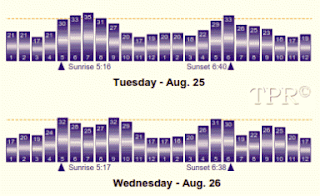According to the latest United Nations World Population Report, the current global population of 7.3 billion is projected to rise to 8.5 billion by 2030, 9.7 billion by 2050, and 11.2 billion by 2100. Yet, perhaps the most significant development of the twenty-first century is not population growth, but the silent extinction of peoples, nations, cultures, and civilizations.
The so-called "developed world" is neglecting one of the most fundamental responsibilities of any enduring civilization: raising the next generation. Civilization, culture, social cohesion, and economic prosperity all depend on a basic prerequisite—continued human existence. Without reproduction, all other achievements ultimately become irrelevant.
Prosperity, war, birth control, decadence, exploitation, austerity, abortion, and social decline are all mirrored in the changing age structure of the German population across the years 1910, 1970, 2009, and the projection for 2060. (HERE)
Take Germany as an example. The country has a population of approximately 82 million, with a fertility rate of 1.43—a figure that continues to decline. Of this population, around 17 million have a recent immigrant background, and roughly 22 million are retirees. Germany’s labor force still numbers about 40 million, but neoliberal reforms under the Schröder-Merkel governments have contributed to the marginalization of an estimated 11 to 18 million people, creating a socio-economic underclass.
Approximately 8 million working-age adults (18 to 65) are unable to sustain themselves—either unemployed or trapped in precarious, low-wage employment such as contract work, “One-Euro jobs,” part-time roles, mini-jobs, and other exploitative schemes tied to the Hartz labor market reforms. Around half a million Germans are homeless, many of them children, in a system where the remaining taxpayers finance what can only be described as institutionalized social neglect.
The average worker surrenders nearly two-thirds of their gross income to taxation, while the state has poured €400 billion into rescuing failing banks and continues to pay €100 million in daily interest on public debt. Within this socio-economic landscape, roughly 650,000 children are born each year—one-third to parents of immigrant backgrounds—compared to around 840,000 deaths annually, resulting in a net loss of nearly 200,000 people per year.
In essence, as it rapidly ages and grows poorer, Germany loses the equivalent of a mid-sized city every year. Official projections indicate the population will shrink to between 65 and 74 million by 2060, depending on annual net migration levels (ranging from 100,000 to 400,000). Meanwhile, demographic collapse among the native population continues, marked by a third of women remaining childless, over 200,000 abortions annually, and other structural factors contributing to a sustained decline in birth rates.
Combined with immigration policies perceived by critics as prioritizing replacement over integration, Germany faces the potential erasure of its historic national identity within this century. This trajectory is not unique; similar patterns can be observed across nearly all other European nations.

The Pentagon’s all-season recipe for disaster—straight from the NATO playbook—consists of orchestrated regime changes and civil wars, which in turn trigger mass migration and the subsequent settlement of a globalized lumpenproletariat and refugee populations among 30 million unemployed and 120 million impoverished native Europeans. (HERE + HERE + HERE) As of today, the global average fertility rate stands at 2.3, with 80% of the world’s population living in countries where women, on average, have fewer than three children. This means that global fertility is only marginally above the replacement level, and current population growth is primarily driven by increased life expectancy rather than high birth rates. In 1960, China’s fertility rate was 6.1; today it has fallen to 1.6. Iran’s fertility rate dropped from 6.3 in 1985 to 1.9 today. Thailand followed a similar trajectory: from 6.14 in 1955 to 3.92 in 1985, and down to 1.49 today.
The issue facing the developed world is not only economic stagnation but also demographic decline. Many nations are aging rapidly and experiencing fertility rates well below the replacement threshold—some have arguably passed the demographic point of no return. The lowest fertility rates globally are concentrated in the most industrialized regions of Asia: China (1.55), Japan (1.40), South Korea (1.25), Taiwan (1.11), Hong Kong (1.04), Macau (0.91), and Singapore (0.80). Similarly low, near-extinction fertility rates are seen in parts of Southern Europe and former Soviet states: Portugal (1.52), Spain (1.48), Italy (1.42), Greece (1.41), Poland (1.33), and Ukraine (1.30).
In contrast, Africa remains demographically youthful. In 2015, children under 15 made up 41% of its population, with another 19% aged 15 to 24. Latin America and the Caribbean, as well as much of Asia—regions that have seen substantial fertility declines—show smaller proportions of children (26% and 24%, respectively) and comparable shares of youth (17% and 16%). Together, these three regions were home to 1.7 billion children and 1.1 billion young people in 2015.




















































